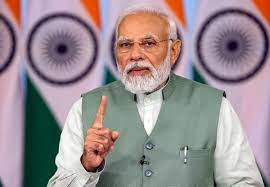New Delhi: Prime Minister Narendra Modi directed the Indian Space Research Organisation (ISRO) to set up an "Indian space station," called "Bharatiya Antriksha Station," by 2035. Additionally, he urged ISRO to land the first Indian on the moon by 2040. These directives were part of a meeting which was held on Tuesday, chaired by Modi, focusing on ISRO's progress regarding India's manned space mission, Gaganyaan.

During the meeting, the department of space confirmed that the first unmanned demonstration launch under Gaganyaan, testing the mission's 'Crew Escape System Test Vehicle', is scheduled for Saturday, 21 October. India's first manned space mission under Gaganyaan is set to launch in 2025.
A spokesperson from the department of space stated, "The department of space will develop a roadmap for moon exploration, including a series of Chandrayaan missions, next-generation launch vehicle (NGLV) development, new launch pad construction, human-centric laboratories establishment, and associated technologies. The prime minister also urged Indian scientists to work on interplanetary missions, including a Venus Orbiter Mission and a Mars Lander."
These announcements come as India steadily advances toward its manned space missions. On 5 October, Jitendra Singh, Union minister of state for science and space, suggested that the first unmanned trial launch of the mission is likely to be ready for launch by November.
On 10 October, Pawan Goenka, chairman of the nodal space authorization body Indian National Space Promotion and Authorization Centre (In-Space), highlighted in the body's decadal vision that India's space industry could account for 8% of the global space market, valuing it at $44 billion, including $11 billion in exports. A significant portion of this contribution is expected from private startups, with anticipated private investments of $22 billion over the next 10 years.
While private startups are anticipated to play a substantial role in this commercial valuation, ISRO and its commercial division NewSpace India Ltd are also projected to be key players in the sector. The latter is set to enhance India's rocket launch capacity with its new small satellite launch vehicle (SSLV), expected to increase commercial operation frequency by 2025.
India's space ambitions received a boost with the successful landing of Chandrayaan-3, India's latest moon mission, where the landing module Vikram achieved a successful soft touchdown in the lunar south pole region on 23 August. Subsequently, ISRO also launched Aditya-L1, India's first solar observatory built to study the sun's atmospheric conditions and its impact on the space weather of our entire solar system.


